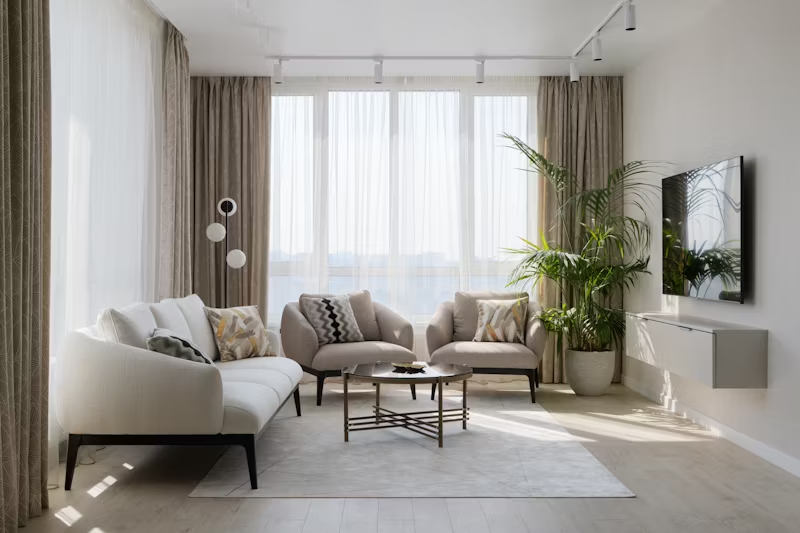
Want to enhance your home’s design and functionality? This article offers design and practical tips for a better living space. Discover how to create a welcoming atmosphere, maximize space, choose durable materials, and integrate natural elements. These tips will help you make any room both beautiful and efficient.
- Create a welcoming atmosphere by focusing on lighting, textures, and color palettes to make your living space cozy and inviting.
- Maximize your space with clever layouts, utilizing multi-functional furniture and built-in storage to keep clutter at bay.
- Incorporate personal touches and future-proof your home with durable materials and adaptable technologies to reflect your lifestyle and enhance comfort.
Creating a Welcoming Atmosphere
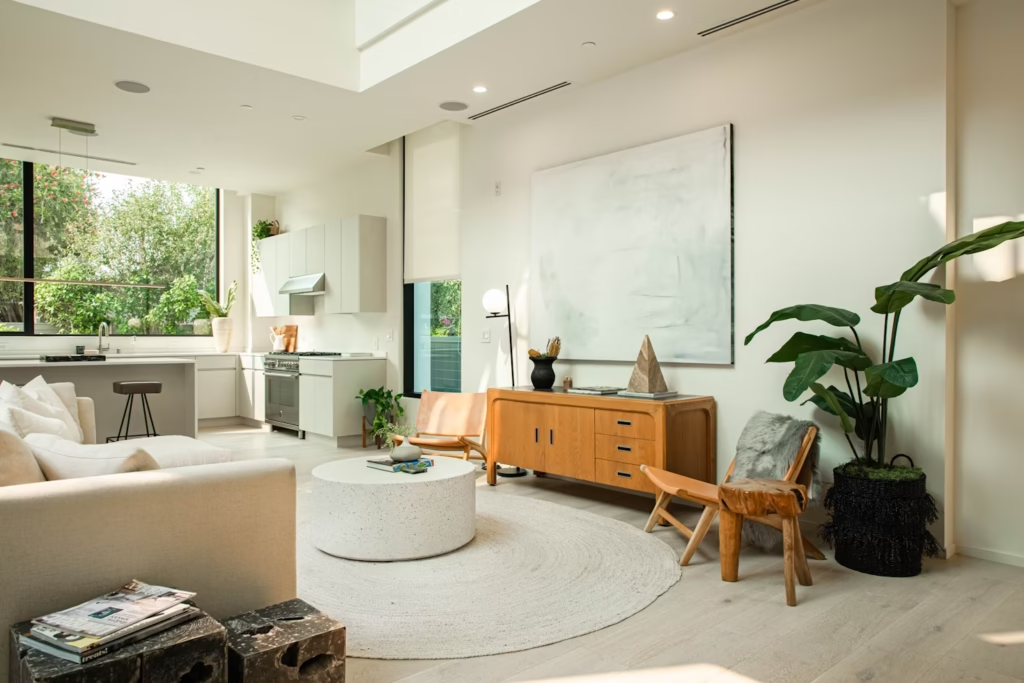
Source: https://unsplash.com/photos/brown-wooden-chair-beside-white-table-aPD1yNUYP0w
The first step in making any living space inviting is to focus on the elements that set the mood. Lighting, textures, and paint color palettes are fundamental to achieving the desired room feel. Imagine walking into a room bathed in soft, warm light, with plush cushions and a harmonious color palette. Doesn’t that sound inviting? Good lighting can make a space feel cozy and warm, while the right color palette can create a sense of harmony and peace through painting.
Soft furnishings such as rugs and curtains are also key to creating a welcoming atmosphere. They not only add visual interest but also bring warmth and comfort. Think of a living room design where the rug feels soft underfoot, and the curtains gently diffuse the natural light. These elements can transform a room from cold and impersonal to warm and inviting, making it a place where guests and family members will enjoy spending time.
A welcoming atmosphere combines aesthetics with functionality, making your living areas both beautiful and inviting. Adding touches like wholesale home decor pieces can also be a cost-effective way to elevate your interiors without overspending.
Maximizing Space with Clever Layouts
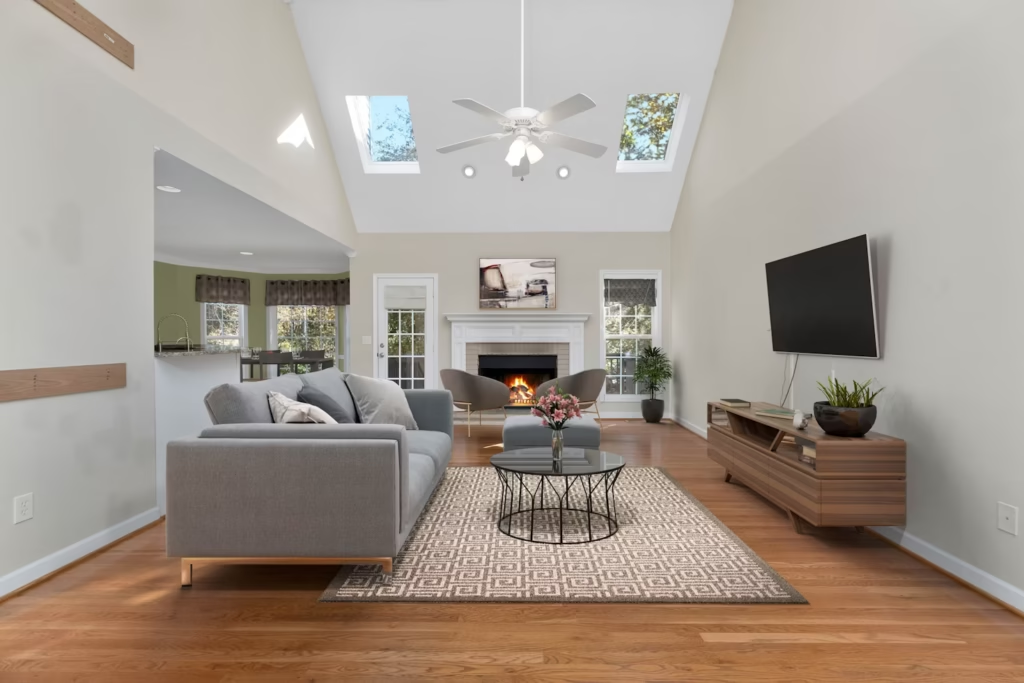
Source: https://unsplash.com/photos/a-living-room-with-a-fireplace-koLQ6-45B3k
When it comes to maximizing one space, especially in smaller apartments, the layout is everything. Consider the following strategies:
- Arrange furniture pieces to make a significant difference in how spacious a room feels.
- In larger open spaces, create distinct zones for different activities to maintain order and functionality.
- In compact apartments, make every square foot count.
- Use multi-functional pieces, such as a dining table that doubles as a work desk, to save space and add versatility to your living area. For more tips on apartment therapy, explore various design ideas.
One of the most effective ways to maximize space is by incorporating built-in storage solutions. These can keep clutter at bay and make the room feel more open. Think about using vertical space with high shelves or hooks to free up floor space. Open shelving can also create an illusion of more space and light, making even small rooms feel less cramped.
Another great tips is choosing appropriately sized furniture. Oversized furniture can make a small space room feel overcrowded, while compact, well-proportioned large pieces can enhance the room’s openness. Don’t forget about utilizing dead spaces—corner sinks in bathrooms, for example, can save space and add a stylish touch.
By carefully planning your floor plan and using clever layouts, you can create a functional and spacious environment with minimal dead space, no matter the square footage of your home.
Choosing the Right Materials and Finishes
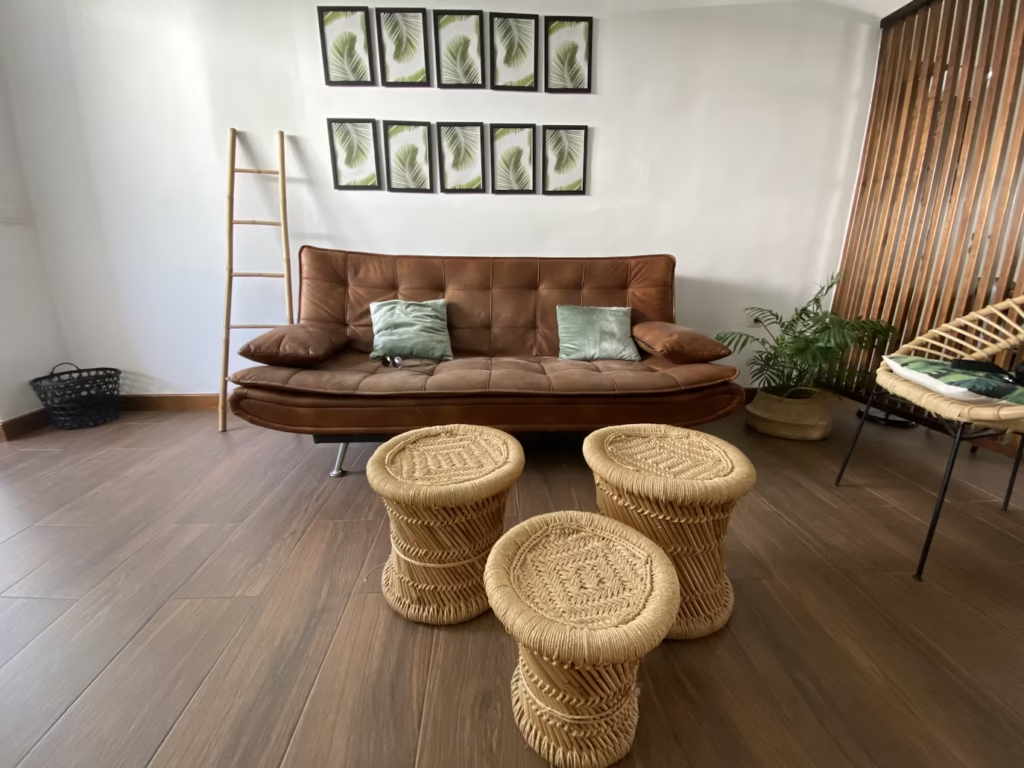
Source: https://unsplash.com/photos/brown-wicker-round-basket-on-brown-wooden-table-8_GecygQo9Q
Choosing sustainable materials like bamboo, recycled wood, and natural stone adds timeless appeal to your home and benefits the environment. These materials are durable and can withstand the test of time, making them ideal for high-traffic areas.
Durability is another key factor to consider. Surfaces that can endure daily wear and tear are essential, especially in areas like the kitchen and living room. Durable materials keep your home beautiful and functional for years to come.
Textures and finishes also play a vital role in the longevity of your design. The right combination can add depth and interest to your interiors, making them look fresh and stylish for longer. The right texture, whether a matte wall finish or a glossy paint countertop, can enhance the shape of your home’s overall aesthetic.
Bringing Nature Indoors
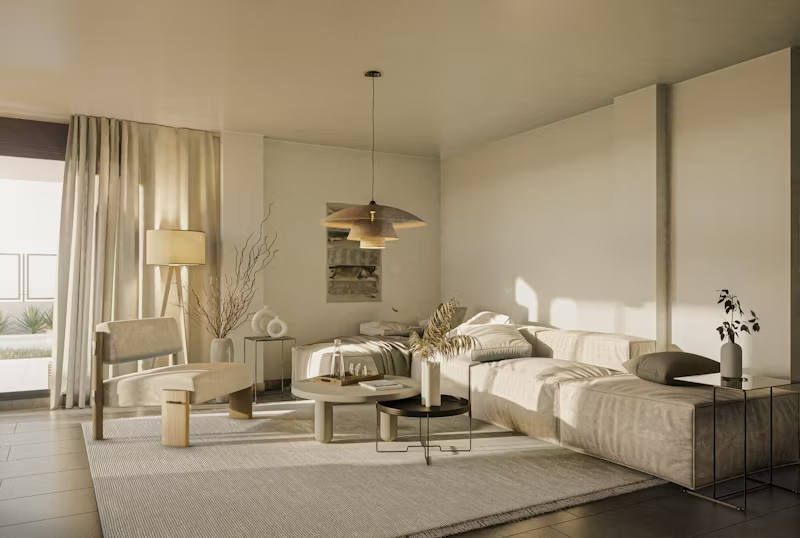
Natural elements can significantly enhance both the aesthetic appeal and well-being of your living space. Indoor plants, for instance, not only improve air quality but also add a touch of freshness and life to any room. A dining room adorned with lush greenery is both beautiful and beneficial for your health.
Natural light is another powerful design element. It makes spaces feel larger and more open while providing a range of health benefits. Strategically placing a large mirror and other mirrors to reflect light can amplify this effect, making your home feel brighter and more inviting.
Balancing aesthetics and wellness is essential when incorporating nature indoors. Decorative items like:
- natural fiber rugs
- wooden furniture
- stone accents can create a harmonious environment that promotes relaxation and well-being. Thoughtfully integrating these elements creates a living space that feels both inviting and nurturing.
Enhancing Comfort with Textiles and Accessories
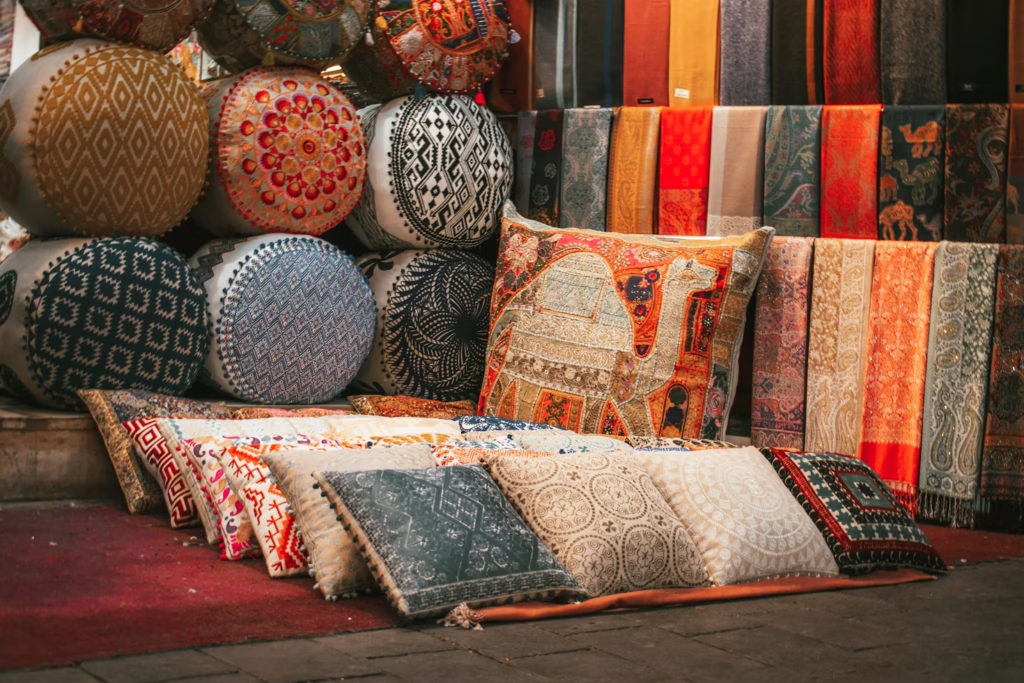
Source: https://unsplash.com/photos/a-bunch-of-pillows-that-are-on-the-ground-YwL8EqZ1uIw
Textiles and accessories are the unsung heroes of home comfort. Cushions, throws, and wall art can elevate the comfort level of any room, making it feel cozy and inviting. Imagine a living room with a plush sofa adorned with colorful cushions and a soft throw—it’s the perfect spot to relax and unwind, surrounded by beautiful walls where you can hang art.
Seasonal updates with easy-to-swap accessories can keep your home feeling fresh and stylish throughout the year. From lighter fabrics in the summer to warm, cozy textures in the winter, these small changes can have a big impact on the room feel.
Accessories also bring personality to a living space. They reflect your style and taste, making your home uniquely yours. Whether it’s a statement piece of art, a collection of travel souvenirs, other pieces of DIY decor, these elements add character and charm to your interiors.
Integrating Technology for Convenience
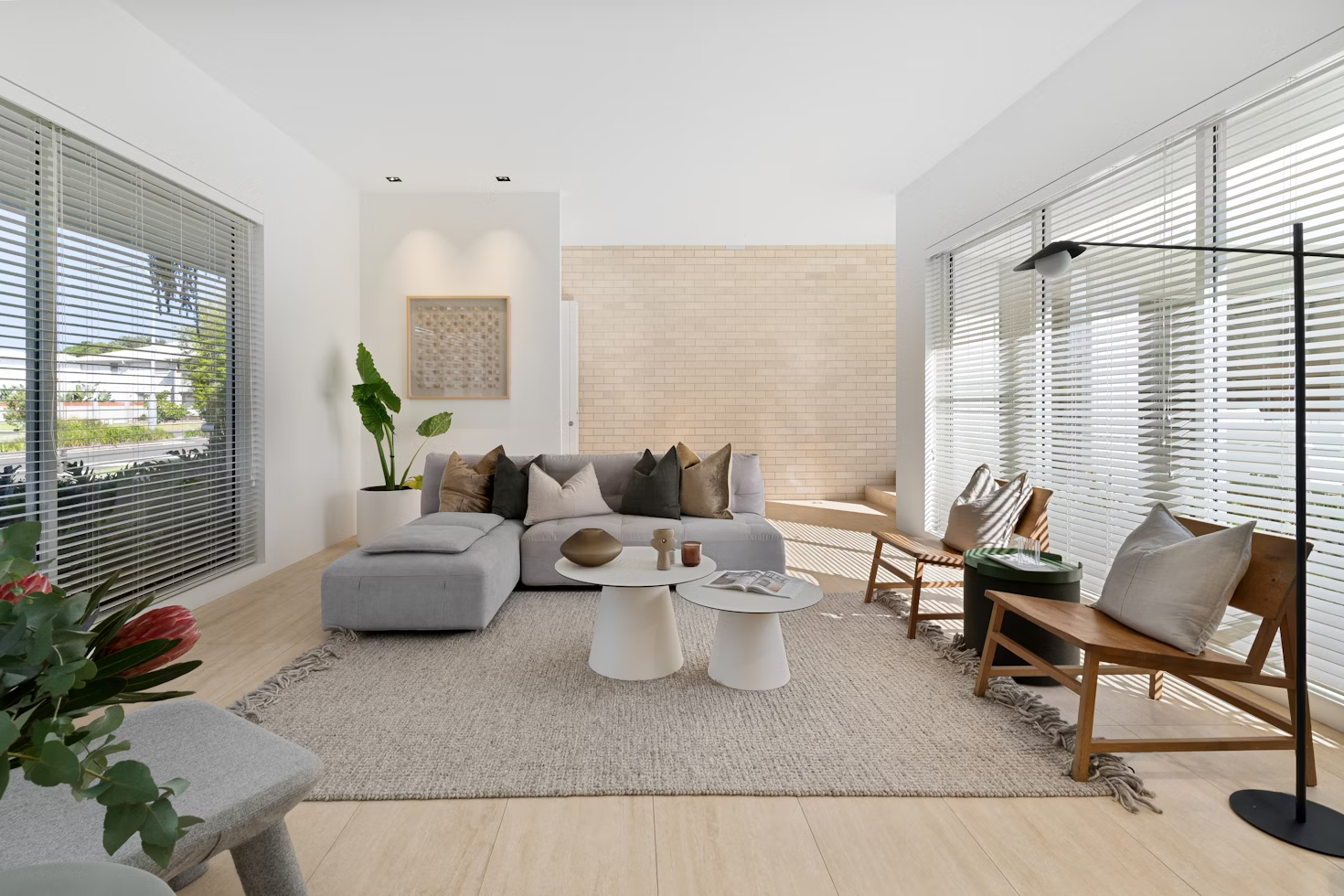
In today’s digital age, integrating technology into your living space can offer unparalleled convenience. Smart devices, climate control systems, and modern security systems can make your home more efficient and secure. Controlling lighting, heating, and security with a few taps on your smartphone is not just convenient; it’s a game-changer.
For example, homeowners who want the ultimate entertainment experience might consider setting up a home cinema Melbourne style, blending luxury design with advanced audio-visual technology.
Balancing modern gadgets with classic décor is essential to maintain a cohesive aesthetic. The key is to ensure that your tech enhancements blend seamlessly with your existing design. For example, smart light bulbs can be integrated into your existing fixtures, providing the advantage of advanced technology without compromising on style.
Ensuring functionality without sacrificing aesthetics is the ultimate goal. By carefully selecting and placing technological elements, you can create a smart home that’s both beautiful and practical, as the main purpose is to enhance everyday living.
Smart Storage and Organization Ideas
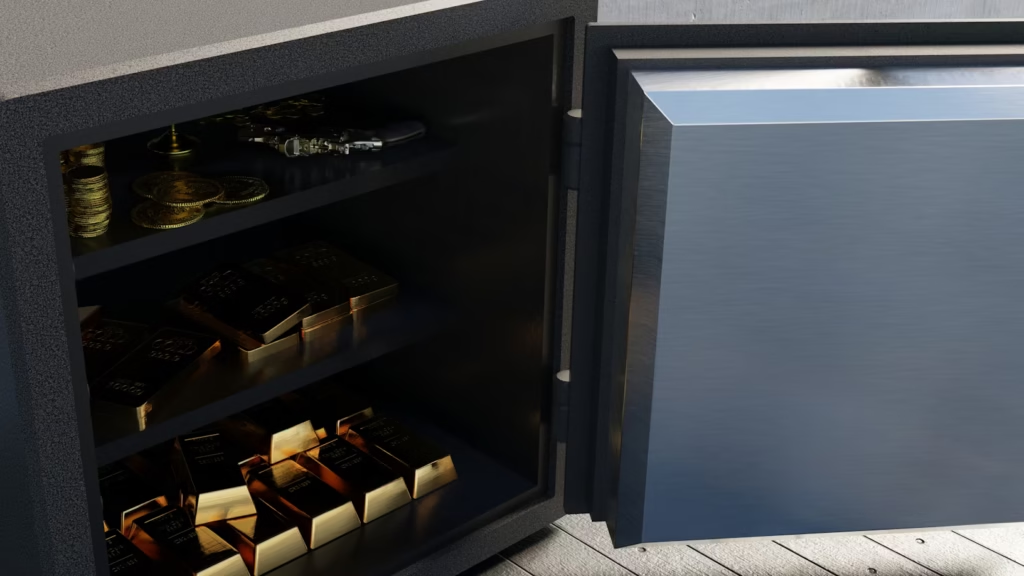
Source: https://unsplash.com/photos/an-open-refrigerator-with-a-lot-of-food-inside-of-it-3UanFjfinEg
Keeping your living space organized can be a game-changer, especially in smaller homes. Shelving solutions, hidden storage, and minimalist approaches can help you make the most of your available space. Open shelving, for example, not only provides more storage but also allows you to display decorative items, adding a stylish touch to your room.
In the kitchen and living room, practical storage solutions are essential to keep clutter at bay. Using multi-functional pieces like nesting tables or coffee tables with hidden storage or seating that doubles as storage can provide extra space for your home items without compromising on style. You can even sit comfortably while sitting and enjoying the benefits of these solutions.
Minimalist approaches to storage focus on reducing clutter and keeping only essential items. This not only makes your space look cleaner and more organized but also creates a more relaxing environment. These ideas help maintain a clutter-free home that’s both functional and aesthetically pleasing.
Maintaining a Healthy Living Environment
A healthy living environment is crucial for your well-being. Essential components for maintaining a comfortable and healthy home include:
- Good ventilation, which helps to reduce indoor pollutants and improve air quality
- Use of natural cleaning products
- Regular home hygiene practices Proper ventilation makes your living space more pleasant and provides breathing room.
Proper ventilation makes your living space more pleasant and provides breathing room. Natural cleaning products are better for the environment and safer for your health.In some cases, external services may be necessary. For example, if you live in rural Australia, hiring specialists like pest control moree can help protect your home and maintain a safe, healthy environment.
Personal Touches That Make a House Feel Like Home
Adding personal touches can transform any house into a home. Incorporating memories, personal art, and DIY décor can make your space uniquely yours. These elements reflect your personality and tell your story, making your home feel special and inviting.
Designing around your lifestyle rather than following trends ensures that your home styling meets your needs and preferences. Whether you love cooking, entertaining, or relaxing, your home should be a reflection of your lifestyle.
Personalizing your decorating process fosters a more meaningful and enjoyable living environment. Experimenting with different styles and elements helps create a space that truly feels like home and allows you to decorate in a way that reflects your personality.
Future-Proofing Your Living Space
Future-proofing your living space involves making it resilient to environmental, technological, and personal changes. Proper insulation and energy-efficient windows are essential for maintaining a comfortable home and reducing energy costs.
A well-thought-out home layout can facilitate ease of movement and better space utilization. Investing in durable materials and timeless design features can enhance your home’s long-term value. These elements ensure that your home remains functional and stylish for years to come.
Incorporating adaptable technologies can save you from costly renovations later. Thinking ahead about lifestyle changes can guide your decisions about home renovations, ensuring that your living space can grow and adapt to your changing needs.
Summary
In conclusion, creating a better living space involves a harmonious blend of design, functionality, and personal touches. From lighting and color palettes to smart storage solutions and future-proofing techniques, each element plays a crucial role in making your home both beautiful and practical.
By following these tips, you can transform your living space into a welcoming, comfortable, and sustainable environment. Remember, your home is a reflection of you, so make it a place that brings you joy and comfort every day.
Frequently Asked Questions
How can I make my living space more welcoming?
To make your living space more welcoming, focus on cozy lighting, soft textures, and a warm color palette. Adding rugs and curtains can really enhance the comfort and atmosphere!
What are some tips for maximizing space in a small apartment?
To maximize space in a small apartment, opt for multifunctional furniture, add built-in storage, and make use of vertical space with high shelves or hooks. These strategies can really help you create a more spacious and organized environment.
How can I bring nature indoors?
To bring nature indoors, start by adding indoor plants for better air quality and brighten up your space with natural light. Incorporate wood and stone materials for a cozy and earthy vibe.
What are some smart storage ideas for keeping my home organized?
To keep your home organized, try using open shelving for easy access to items, and explore hidden storage solutions to maintain a clean look. Embracing a minimalist approach can really help reduce clutter and make your space feel larger.
How can I future-proof my living space?
To future-proof your living space, focus on durable materials, energy-efficient windows, and adaptable technologies. This will not only enhance comfort but also ensure your home meets future demands easily.
- 0shares
- Facebook0
- Pinterest0
- Twitter0


